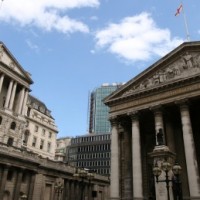
Consumer prices index (CPI) annual inflation was down from 3.4% in May but is still well above the Bank of England’s 2% target.
The ONS said falling petrol and diesel prices primarily accounted for the drop, which was slightly above expectations of a fall to 3.1%. Another significant driver was decreasing clothing and footwear prices after a record June sales season.
Upward pressure came from house contents and care insurance where average premiums increased between May and June.
In the year to June, the retail prices index (RPI) – which includes mortgage costs and is used in pay talks – fell to 5% from 5.1% in May. The fall was driven by the same factors as those impacting CPI. House price depreciation exerted upward pressure on RPI, the ONS added.
RPIX inflation – all RPI items excluding mortgage interest payments – was 5% in June, down from 5.1% in May.
The ONS said the UK’s CPI figure for May is above the provisional figure for the European Union of 2%.
Despite CPI remaining above the target figure, the Bank expects it to fall further this year. The index hit a 17-month high of 3.7% in April.
World First Chief economist Jeremy Cook says: “Inflation is starting to moderate lower as Mervyn King and most of the MPC have made clear of late. I see no reason for an interest rate rise in the UK until February of next year.
“This would give the recovery a few more months to kick on and allow the High Street a, hopefully, solid Christmas.”
Christina Weisz, a director of currency specialists at Currency Solutions, strikes a more cautionary note. She says the UK is still in a state of “inflationary limbo” and the monthly fall does not signal the start of a longer-term trend.
“Inflation is still well above target and there are myriad factors that could apply both downward and upward pressure, from a further weakening of the labour market and the tightening of fiscal policy to a resurgence in retail sales and the impending rise in VAT,” she says.
“The short-term risk to Sterling remains on the downside, although the minutes of the latest MPC meeting to be issued next week may see a hardening of the pound if, as suspected, there is further dissension around the level of interest rates.”
At last month’s MPC meeting, Andrew Sentance voted to increase rates to 0.75%.
Meanwhile Simon Ward, the chief economist at Henderson, says the jump in services inflation provides proof that spare capacity is not having a dampening effect as the MPC expected.
He predicts the Bank of England will have to review its inflation target upwards in the coming months. “The Bank is likely to be forced to revise up its forecasts of 2.54% and 2.28% in the third and fourth quarters significantly in the August Inflation Report,” he says. “On conservative assumptions, inflation may average 2.75% in the fourth quarter before returning to 3% in early 2011 as VAT is raised.”
Sterling rose against the US dollar following release of inflationary data, rising from $1.4965 to $1.5040.















